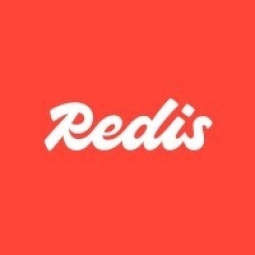Technology Category
- Infrastructure as a Service (IaaS) - Cloud Databases
- Networks & Connectivity - Cellular
Applicable Industries
- Finance & Insurance
- Telecommunications
Applicable Functions
- Warehouse & Inventory Management
Use Cases
- Traffic Monitoring
- Transportation Simulation
Services
- Cloud Planning, Design & Implementation Services
About The Customer
Starlogik is a company in the advanced telecommunications industry that aims to eradicate the global digital divide. They have developed a patented technology, ZRO, which is a breakthrough in cellular switching that advances industry billing from prepaid to free. This technology allows users with zero credit on their phones to make calls and seamlessly ping for a callback. Starlogik's technology is particularly beneficial for prepaid users in emerging markets, 30% of whom have zero airtime balance on any given day and cannot make a call. The company's goal is to connect the unconnected, providing a new market demographic and untapped revenue streams for operators.
The Challenge
Starlogik, a company in the advanced telecommunications industry, launched its ZRO patented technology to help eradicate the global digital divide. This technology allows users with zero credit on their phones to make calls and seamlessly ping for a callback. However, after implementing this vision with a few African mobile carriers, Starlogik faced scalability challenges due to extremely high call volumes processing through their systems. They also lacked a reliable method to load, process, and efficiently store the massive amounts of data generated in an ongoing manner. The company needed a solution that could handle the high call volumes and data processing requirements without interrupting the flow of calls or data entry into its systems.
The Solution
Starlogik turned to Redis Cloud, a managed Database-as-a-Service (DBaaS), to address their scalability and data processing challenges. Initially, they used open-source Redis before migrating to Redis Cloud. The company set up a new cluster on Redis Cloud to serve as a short-term cache for heavy amounts of data. They also established an architecture to batch process the cached data to a data warehouse for further analysis. This setup allowed them to handle the high call volumes and data processing requirements without disrupting the flow of calls on the frontend of the app or the continuous data entry into its systems. The transition to Redis Cloud was seamless and completed in under 30 minutes, with Starlogik building an exact replica of its database from Amazon ElastiCache on Redis Cloud and directing its live traffic to this new cluster.
Operational Impact
Quantitative Benefit

Case Study missing?
Start adding your own!
Register with your work email and create a new case study profile for your business.
Related Case Studies.

Case Study
Real-time In-vehicle Monitoring
The telematic solution provides this vital premium-adjusting information. The solution also helps detect and deter vehicle or trailer theft – as soon as a theft occurs, monitoring personnel can alert the appropriate authorities, providing an exact location.“With more and more insurance companies and major fleet operators interested in monitoring driver behaviour on the grounds of road safety, efficient logistics and costs, the market for this type of device and associated e-business services is growing rapidly within Italy and the rest of Europe,” says Franco.“The insurance companies are especially interested in the pay-per-use and pay-as-you-drive applications while other organisations employ the technology for road user charging.”“One million vehicles in Italy currently carry such devices and forecasts indicate that the European market will increase tenfold by 2014.However, for our technology to work effectively, we needed a highly reliable wireless data network to carry the information between the vehicles and monitoring stations.”

Case Study
Vodafone Hosted On AWS
Vodafone found that traffic for the applications peak during the four-month period when the international cricket season is at its height in Australia. During the 2011/2012 cricket season, 700,000 consumers downloaded the Cricket Live Australia application. Vodafone needed to be able to meet customer demand, but didn’t want to invest in additional resources that would be underutilized during cricket’s off-season.

Case Study
SKT, Construction of Smart Office Environment
SK T-Tower is the headquarters of SK Telecom. Inside the building, different types of mobile devices, such as laptops, smartphones and tablets, are in use, and with the increase in WLAN traffic and the use of quality multimedia data, the volume of wireless data sees an explosive growth. Users want limitless Internet access in various places in addition to designated areas.










